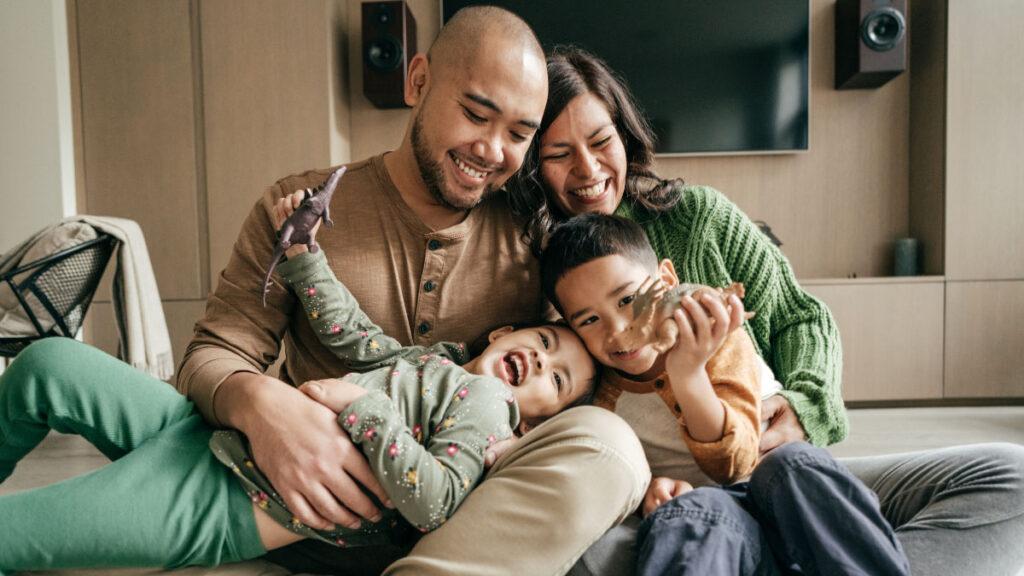Protection Services Provided by The Children’s Aid Society of Ottawa:
Based on 2024-2025 Service Data.
Service Data: A Closer Look
Intake and Assessment
Community members who believe that the actions or inactions of a parent or caregiver have caused harm or may place a child or youth at risk of harm, are encouraged to contact the Children’s Aid Society of Ottawa. Reports can be made at any time—24 hours a day, seven days a week—through phone calls, letters, emails, in-person visits, or police reports.
All reports are reviewed by a team of assessment workers who use the Ontario Child Welfare Eligibility Spectrum, a standardized tool, to determine whether the concerns meet the criteria for child welfare services. The tool helps ensure that decisions are consistent, fair, and based on provincial standards. The Ontario Child Welfare Eligibility Spectrum can be accessed here: Ontario Child Welfare Eligibility Spectrum 2024.
Read more
Outside of regular business hours, including evenings, weekends, and holidays, CASO maintains an After Hours Services (AHS) team. This team, comprised of experienced child, youth, and family service workers and supervisors, is available to respond to concerns related to child maltreatment or neglect.
An assessment worker will respond immediately if the information provided suggests that a child or youth may be in immediate danger or if there are signs of a suspicious injury. In cases where the concern meets the criteria for service but is not urgent, CASO will initiate a response within seven days.
When a family is referred to CASO, the assessment worker’s role is to evaluate the situation and determine whether there is a risk of maltreatment that requires further involvement. In many cases, short-term involvement during the assessment stage is sufficient to help strengthen the family’s ability to care for their children safely.
In the last fiscal year, CASO experienced a nearly 3 percent increase in the number of assessment cases compared to the previous year. This increase may be partly due to the continued return to post-pandemic routines, which has resulted in greater visibility of children and youth in the community. Additionally, the pandemic has had ongoing effects on families, including increasingly complex mental health challenges, which may also contribute to the rise in referrals.
Read less
Ongoing Services
When child protection concerns are not resolved during the initial assessment, CASO connects the family with an ongoing service worker. This worker is responsible for helping to ensure the plan of service initiated during the assessment phase is implemented, and that the family is supported in meeting their goals through continued involvement.
Families are actively engaged in the ongoing assessment process. This includes building a safety network, identifying signs of safety, risks, complicating factors, strengths, and available resources. The ongoing worker continues to evaluate both protective and risk factors while collaborating with the family and their support network to develop a safety plan aimed at reducing any identified risks.
Read more
Between the 2019/20 and 2022/23 fiscal years, there was an overall decline in the number of ongoing child protection cases managed by CASO. This trend mirrors the pattern seen in initial assessment cases, as referenced in Figure 1, and likely reflects the broader and continuing impact of the COVID-19 pandemic on children, youth, and families. While the number of child protection assessments increased in 2024/25, the number of cases transferred to ongoing services declined by 27.4%.
To better understand this shift, CASO is conducting a detailed clinical review of how decisions are made regarding the transfer of cases from assessment to ongoing services. This review will help ensure that decisions continue to align with best practices and the evolving needs of families in our community.
Read less
Children and Youth in Care
The number of children and youth in the care of the Children’s Aid Society of Ottawa has seen a recent uptick, following a period of lower in-care volumes during the height of the COVID-19 pandemic. We experienced an increase of 4.6% in 2024/25 over last fiscal year. As overall service volumes return to pre-pandemic levels, this increase reflects a broader trend of re-engagement with community systems, including schools, health care, and social services, which are key environments where child protection concerns are often identified.
Read more
While the majority of families served by CASO remain safely together with support, there are circumstances in which a child’s safety cannot be assured in their current living situation. In these cases, and only when necessary, CASO assumes temporary or long-term care to ensure the child’s well-being. Placement decisions prioritize the least disruptive options, with a strong emphasis on kinship care, Formal Customary Care (for First Nations children), and family-based settings.
The increase in the average number of children in care is being closely monitored. CASO remains committed to permanency planning, family reunification where possible, and culturally responsive care options that support long-term safety, stability, and well-being for every child.
Read less
Cultural Identity of Children and Youth in Out-of-Home Care
CASO is committed to identifying the ethno-cultural, social, and language identities of all individuals receiving services. This information helps us better meet the needs of children, youth, and families, and supports our efforts to assess and address disproportionality and overrepresentation of racialized groups within our services.
We actively collaborate with community partners who serve populations with diverse ethno-cultural and social identities to ensure that the services we provide are respectful, responsive, and aligned with the unique needs of each family.
Figure 4 presents data on the ethnicity of children and youth in out-of-home care over the past four fiscal years, compared to the general population of Ottawa (Census 2021). This includes children and youth in care, those in kin service and formal customary care arrangements, and those receiving Ready Set Go1 services.
Of particular note is the continued overrepresentation of children and youth of African and Caribbean descent, as well as First Nations, Inuit, and Métis children, in out-of-home care. CASO is undertaking several initiatives aimed at improving services for children and families from these communities, including the implementation of culturally appropriate service models to serve Black and Indigenous families. These efforts include a focus on building stronger partnerships with community organizations and deepening our understanding of the unique challenges and systemic barriers these families face.
Figure 5 provides a more detailed breakdown of the data. Children and youth of African and Caribbean descent represent 17.2 percent of the total out-of-home care population. However, they account for 29.6 percent of those in care placements, which includes both in-care and kinship in care2.
The largest proportion of children and youth in out-of-home care, 44.6 percent, are receiving services through the Ready Set Go program. This number reflects the impact of the program’s launch on April 1, 2023, which extended eligibility for services up to age 23. The previous program, Continued Care and Support for Youth, had provided services only up to age 21.
Additionally, 20.8 percent of children and youth in out-of-home care are placed in kinship service arrangements. These placements involve living with relatives or other adults known to the child or youth. Although considered out-of-home care, kinship placements help preserve important family and community connections.
The data on Indigenous children and youth in out-of-home care is further broken down by placement type. A total of 40.6 percent are in in-care placements, representing the largest group. The second largest group, at 29.1 percent, are in kinship service placements. Another 20 percent are receiving services through the Ready Set Go program. While only 1.8 percent are in Formal Customary Care Agreements3 (FCCAs), it is important to note that there are barriers to establishing these agreements. For instance, 50 percent of First Nations children and youth in in-care placements do not have an identified community, which makes them ineligible for an FCCA.
Resource Services
At CASO, specialized workers focus on delivering services in key areas including Family Finding and Family Engagement, Foster Care, Kinship, and Adoption.
In 2020, CASO launched a strategic initiative to reduce reliance on group care settings. This work continues to show gradual progress. In the 2024/25 fiscal year, the overall use of group care declined slightly to 12 percent, compared to 13 percent in the previous year. At the same time, the use of society foster care increased from 19 percent to 22 percent. Use of Outside Paid Resource (OPR) foster care decreased by 1 percent.
These shifts reflect steady progress toward our goal of reducing group care placements and expanding the availability of family-based care. In particular, we are seeing a consistent decline in the use of OPR foster care and a growing emphasis on placing children and youth in settings that offer more stability and connection.
In addition, during the past fiscal year, 55 percent of children and youth in out-of-home care had Ready Set Go (RSG) status. The program, which launched on April 1, 2023, extends support to youth up to age 23, enhancing our ability to provide meaningful transition services to older youth.
Kinship Service
Kinship service aims to provide care and support for children who are unable to remain safely at home, in a way that respects family and community traditions. Families providing kinship service undergo a screening process to assess their ability to meet the child or youth’s safety and well-being needs. While a biological relationship is not required, kinship service providers are often people who already have a meaningful connection with the child or youth, such as grandparents, extended family members, family friends, coaches, or teachers.
Kinship service is considered a preferred alternative to in-care placements such as foster care or group care, when it is safe to do so. Although there was a slight decrease in point-in-time data last fiscal year, the overall use of kinship service has grown by more than 25 percent since 2019–2020. This increase is a positive indicator, particularly given the overall decline in the number of children in care during the same period. It suggests that CASO is consistently seeking out and prioritizing kinship service as a less intrusive and more family-connected placement option when children and youth cannot remain at home.
Permanency
CASO has focused on increasing permanency for children and youth since 2006. This involves a significant shift in beliefs and practices that place the emphasis on concurrent planning, from first involvement at the investigation assessment phase. This entails equal attention be given to a child or youth’s immediate safety needs as well as long-term care arrangements. Everyone involved in the planning process must:
- Believe that families can develop and maintain the capacity to care for their children given the appropriate supports.
- Move quickly when a child or youth requires out-of-home care to identify and engage interim care providers within families and their communities (kin).
- Search for potential kin who may commit to providing permanency through adoption or legal custody early in the case planning and continue searching on an ongoing basis for as long as the child or youth is in care if they cannot return home.
- Realize that age or special needs should not be a barrier to permanency for any child or youth.
- Make use of tools such as genograms, mobility and connectedness mapping with children, youth and families to assist in developing their support networks to:
- Support them in times of crisis to keep the child safe while remaining at home;
- Help the child feel connected to a strong identity rooted in their own history;
- Offer practical supports to the child such as tutoring and mentoring;
- Provide interim or permanent care to the child/youth; and,
- Be creative in accessing financial subsidies and community-based resources to address specific needs of children/youth, thus removing barriers to establishing permanency.
CASO continues to pursue adoption and legal custody orders as permanency options. Figure 9 illustrates the permanency options achieved by type: adoptions, legal custody that was granted under CYFSA Section 102 (an order where the child or youth does not have Extended Society Care status) and legal custody granted under CYFSA Section 116 (the child must have Extended Society Care status). As placement of children and youth in kin homes for interim care occasionally leads to permanency in that family, the work of assessing and supporting kin families is closely aligned with that of adoption. This year, while adoption finalizations decreased by 22.2%, legal custody orders increased by 54% over the previous fiscal year.
- Continued Care and Support for Youth (CCSY) was a support service provided to former youth in care who would benefit from assistance beyond their 18th birthday in order to successfully assist in the transition out of care. It was replaced on April 1, 2023 with the Ready, Set, Go (RSG) program. ↩︎
- In Ontario, kinship care refers to situations where a child is placed with someone they know, such as a relative or close family friend, and is officially considered to be in the care of a Children’s Aid Society (CAS). In contrast, kinship service is a more informal arrangement in which a child lives with a known and trusted adult but is not formally in the care of CAS. While both approaches prioritize maintaining important family or community connections, only kinship care involves legal guardianship under the child welfare system. Kinship in care vs service ↩︎
- Under the Child, Youth and Family Services Act (CYFSA), customary care is defined as “the care and supervision of a First Nations, Inuk or Métis child by a person who is not the child’s parent, according to the custom of the child’s band or First Nations, Inuit or Métis community.” Beyond the legal definition, First Nations, Inuit, and Métis communities describe customary care as a traditional and culturally grounded approach to supporting children and families. It reflects a collective responsibility for the well-being of all community members. Customary care emphasizes prevention, cultural continuity, and community-based support, allowing families to remain connected and to live in a way that honors their values and traditions.
Formal Customary Care Agreement ↩︎





